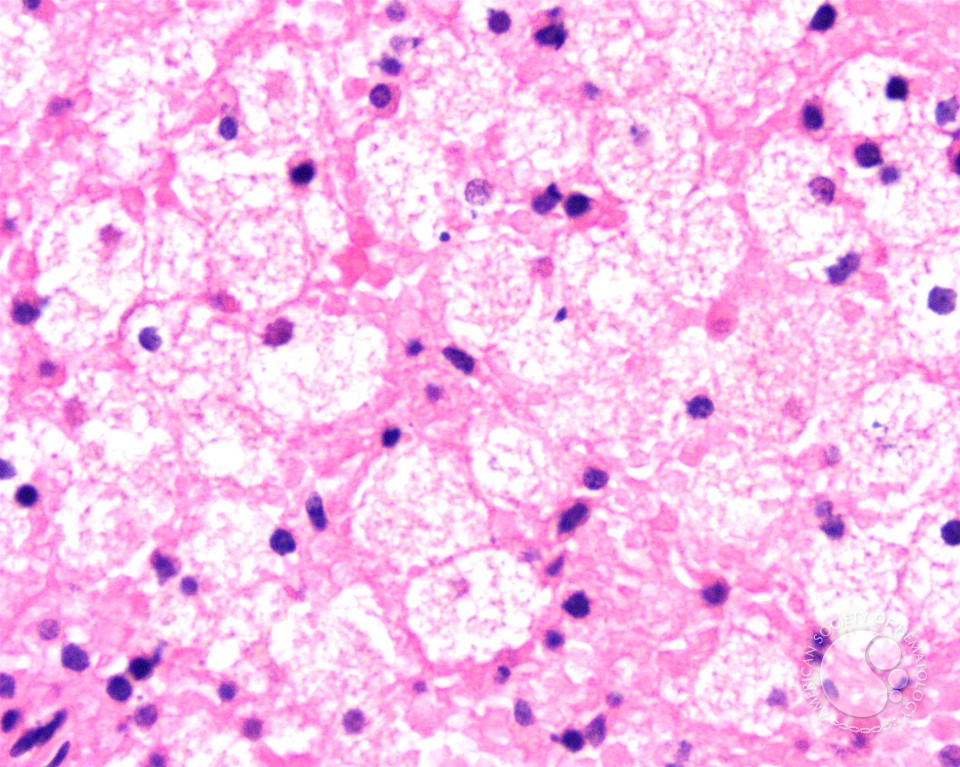
After gaining FDA approval for Miplyffa® (arimoclomol) as the first-ever therapy indicated to treat Niemann-Pick disease type C (NPC), Zevra Therapeutics has cashed in on the regulatory win by closing on the sale of a Rare Pediatric Disease Priority Review Voucher (PRV) that came along with the authorization.
Because Miplyffa had previously been designated a rare pediatric disease drug, it was grandfathered under the FDA’s Rare Pediatric Disease PRV program, despite it starting to sunset on December 20, 2024, after Congress failed to agree on a renewal.
Zevra said it generated gross proceeds of $150 million—about the current average price for PRVs—by selling the voucher to an undisclosed buyer.
That $150 million average value for PRVs has skyrocketed from the $100 million cited in a study published last year, though individual vouchers have sold for between $67.5 million and $350 million.
“It’s a simple supply and demand equation, where if there is going to be less supply and more demand, that the prices then reflect higher values based on that,” Neil F. McFarlane, Zevra’s president and CEO, told GEN Edge.
That demand, he explained, reflects staunch support for the voucher program within the rare disease community that includes Zevra, even after securing a voucher of its own.
“For companies like ours that are looking for risk capital to be invested in our organizations to develop rare and ultra rare disease programs, you’ve got to be able to have the appropriate incentives,” McFarlane explained. “And this is a non-dilutive financing incentive with success that investors are looking for, and it allows us to be able to further execute on our commercialization of our programs, and also on the development of new programs.”
Net proceeds from the PRV sale were $148.3 million, more than tripling Zevra’s cash position since the company finished Q1 with $68.7 million.
Zevra reported $217 million in cash, cash equivalents, and investments earlier this month when it released first quarter results. The company ended Q1 by slashing its net loss year-over-year by 81%, to $3.1 million from a net loss of $16.6 million in Q1 2024. Zevra improved to -six cents from -40 cents in earnings per basic and diluted share.
Miplyffa finished Q1 with $17.1 million in net revenue, accounting for 84% of Zevra’s total $20.4 million. While H.C. Wainwright analyst Oren Livnat last year projected peak year sales of $250 million in the U.S. and another $100 million in Europe, McFarlane says it’s too soon to tell how much Miplyffa will generate in its strongest year of annual sales.
‘Strong’ launch
During the first quarter, Zevra reported filling 13 new prescription enrollment forms to receive Miplyffa, raising the total to 122 enrolments through the end of Q1. That includes all active participants in the drug’s U.S. expanded access program (EAP), which Zevra expects to close by the end of the second quarter. At the end of the first quarter, reimbursement coverage for Miplyffa reached 38% of covered lives, the company said.
“Given its deep expertise in rare diseases and the rapid patient enrollment forms collected to date, which includes all patients enrolled in the U.S. EAP, we believe Zevra is well positioned for a strong Miplyffa commercial launch in 2025,” William Blair analysts Sami Corwin, PhD, and Lachlan Hanbury-Brown wrote May 14 in a research note. “We view the rapid conversion of EAP patients to commercial patients as a sign of management’s strong execution, and view its early progress on getting enrollment forms for both diagnosed and previously undiagnosed patients as positive indicators of the high unmet need among NPC patients and the high demand for disease-altering therapies like Miplyffa.”
Miplyffa became Zevra’s second therapy to win FDA approval—and the first-ever drug approved to treat NPC—in September 2024. The agency authorized the oral small molecule in combination with miglustat to treat neurological manifestations of NPC in adults and children ages two and older. NPC is a rare progressive genetic disorder characterized by the body’s inability to transport cholesterol and other lipids inside of cells.
Reaching the clinic
Miplyffa is first to approval among several NPC drugs to have reached the clinic in recent years.
One is nizubaglustat, the lead candidate of Azafaros, which is being developed for NPC type C1 (NPC1) as well as GM1 and GM2 gangliosidoses. On May 13, Azafaros completed an oversubscribed €132 million (about $149 million) Series B financing whose proceeds are intended to accelerate development of nizubaglustat, set to enter Phase III trials later this year.
Other NPC candidates include IntraBio’s lead candidate IB1001 (N-acetyl-L-leucine), for which positive results from a Phase III trial (NCT05163288) were published last year in The New England Journal of Medicine; and Cyclo Therapeutics, A Rafael Company’s lead asset Trappsol® Cyclo™ (Hydroxypropyl-beta-cyclodextrin) for NPC1, which is set to read out results from the Phase III TransportNPC™ trial (NCT04860960) in mid-2025 (Cyclo merged with Rafael Holdings earlier this year).
Another NPC candidate, adrabetadex (VTS-270), originally developed by Vtesse (acquired in 2017 by Sucampo Pharmaceuticals) was bought out a year later by Mallinckrodt Pharmaceuticals, which sold off adrabetadex to Mandos in 2021.
Based on the incidence of NPC estimated at one in 100,000 to 130,000 live births, Zevra estimates approximately 1,800 individuals with NPC in the U.S. and Europe combined—approximately 900 in the U.S. and the rest in the European Union, where miglustat has been an approved treatment for NPC since 2009, marketed as Zavesca® by Johnson & Johnson. Zavesca is also indicated in both Europe and the U.S. for adults with mild/moderate type 1 Gaucher disease, for whom enzyme replacement therapy is not a therapeutic option.
Of the estimated 900 U.S. patients, approximately 300 to 350 people have been diagnosed in the U.S. since Miplyffa reached the market.
‘Exceeding Expectations’
“The launch of our Miplyffa program is exceeding expectations,” McFarlane said. “In terms of planning, I don’t think that we felt like we would be able to penetrate that number of patients [that quickly]. And it really shows two things. Number one, it shows that the activation of patients and their families and the anticipation of a treatment for Neimann-Pick C was really high. I think it also shows our preparation, and our ability to convert our expanded access program patients.”
“Now, our medicine is actually making an impact in the lives of people with NPC, so we are really pleased with it,” McFarlane added.
In a paper published in the May issue of Molecular Genetics and Metabolism, researchers from Zevra and Orphazyme published details on the mechanism of action for Miplyffa: Arimoclomol enters the cell and increases the translocation of translation factors EB and E3 (FTEB & TFE3) from the cytosol to the nucleus. That translocation is a key initial step for triggering a cascade of downstream events that according to the researchers can rescue cellular functions.
TFEB and TFE3 upregulate the coordinated lysosomal expression and regulation (CLEAR) genes including NPC1, which is essential for the regulation of lysosomal function. Increased CLEAR gene expression causes higher NPC1 protein levels in the lysosomes, leading to greater correction of aberrant cholesterol trafficking. In animal NPC models, greater correction of aberrant cholesterol trafficking was shown to correlate with the improvement of specific neurological behaviors, such as rearing and gait, the researchers added.
Two decades-plus of development
Development and rights to arimoclomol passed through several companies over more than two decades. The FDA approval came more than two years after Zevra—then known as KemPharm—acquired arimoclomol and substantially all assets and operations of the drug’s previous developer Orphazyme for $12.8 million as part of a restructuring after the Copenhagen-based company filed for bankruptcy in Denmark.
Orphazyme filed in 2020 for FDA approval of arimoclomol under Priority Review, with investor chatter on Reddit sparking an investment surge that catapulted the company’s stock price from $5 to $77 a share before plunging back to $15 a share in June 2021.
Later that month, Orphazyme saw its New Drug Application (NDA) rebuffed when the agency issued a Complete Response Letter (CRL), pushing down the stock price back to the $6 a share range. The FDA told Orphazyme it needed additional qualitative and quantitative evidence to further substantiate the validity and interpretation of the 5-domain NPC Clinical Severity Scale (NPCCSS) measuring ambulation, cognition, fine motor skills, speech, and swallowing, especially where cognition and swallowing were concerned. The agency also wrote that Orphazyme needed to support the benefit-risk assessment of the NDA with additional data to bolster confirmatory evidence beyond the single Phase II/III trial it conducted.
Zevra responded to the FDA by carrying out additional studies, switching to a four-domain NPCCSS (ambulation, fine motor skills, speech, and swallowing) that rescored swallowing and dropped cognition after the agency noted that the cognition domain ratings relied on access to services and other patient environment factors, and concluded they may not be adequately evaluated by a severity scale.
Zevra also benefited from the additional time between the CRL and its resubmission of data for Miplyffa, since it allowed the company time to compile and analyze additional clinical data. The data persuaded the FDA’s Genetic Metabolic Diseases Advisory Committee to recommend agency approval of Miplyffa.
“Over that period of two years since the CRL and then bringing in the advisory committee, we were able to actually build off of our open label extension study a number of years, as well as our expanded access trial experience with patients, and collected that data,” McFarlane said. “We were able to provide that information where once the totality of our data went in, it was what the FDA ended up opining on to finally approve the product.”
Discovered in Hungary
Orphazyme licensed global rights to arimoclomol in 2011 from CytRx, in exchange for paying $150,000 upfront and committing up to $120 million in milestone payments and royalties. CytRx had inherited arimoclomol in 2004 when it acquired for $3 million the assets of Hungarian-based Biorex Research & Development, where researchers discovered and began developing the drug.
The Miplyffa approval, which included the awarding of a PRV, came nearly two years after the FDA authorized Zevra’s first commercial-phase treatment Olpruva® (sodium phenylbutyrate), a nitrogen binding agent indicated for certain urea cycle disorders (UCDs).
Zevra closed on the sale of the Miplyffa PRV in April after entering into an asset purchase agreement for the voucher in February. Based on the agreement to sell the PRV, plus Zevra’s work in commercially launching Miplyffa and Olpruva, the company was able to delete its disclosure from past quarters warning investors of “substantial doubt as to the Company’s ability to continue as a going concern” for at least a year, as of its 2024 Form 10-K annual report.
Of Zevra’s $23.6 million in 2024 net revenue, nearly half ($10.1 million) came from Miplyffa; while $9.1 million reflected net reimbursements from an expanded access program for the drug in France, where it is known by its generic name arimoclomol; and just $0.1 million was generated by Olpruva.
The remaining $4.3 million came from royalties and other reimbursements under a 2021 license agreement with Corium to market Azstarys® (serdexmethylphenidate and dexmethylphenidate), a central nervous system (CNS) stimulant indicated to treat attention deficit hyperactivity disorder (ADHD) in adults and children ages six and older.



